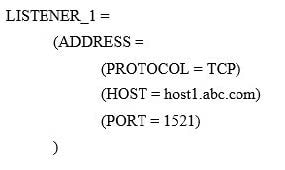1Z0-082 Online Practice Questions and Answers
The stores table has a column START_DATE of data type DATE, containing the date the row was inserted. You only want to display details of rows where START_DATE is within the last 25 months. Which where clause can be used?
A. WHERE MONTHS_BETWEEN(SYSDATE, start_date) <=25
B. WHERE ADD_MONTHS(start_date, 25) <= SYSDATE
C. WHERE TO_NUMBER(start date - SYSDATE) <= 25
D. WHERE MONTHS_BETWEEN(start_date, SYSDATE) <= 25
Which two statements are true about substitution variables?
A. A substitution variable can be used with any clause in a SELECT statement.
B. A substitution variable used to prompt for a column name must be enclosed in double quotation marks.
C. A substitution variable used to prompt for a column name must be enclosed in single quotation marks.
D. A substitution variable prefixed with and always prompts only once for a value in a session.
E. A substitution variable can be used only in a SELECT statement.
F. A substitution variable prefixed with andand prompts only once for a value in a session unless it is set to undefined in the session.
Which two statements are true about the Oracle Data Dictionary?
A. It is owned by the SYS user.
B. Data dictionary base tables can be queried directly.
C. It is owned by the SYSTEM user.
D. Data dictionary views are always created with queries that join two or more base tables.
E. All data dictionary view join base tables to dynamic performance views.
Examine this command and some partial output:

Why does the DB01.abc.com service show unknown status?
A. The service DB01.abc.com is dynamically registered
B. The LOCAL_LISTENER database parameter is not set to a service name that refers to LISTENER_1
C. The service DB01.abc.com is statically registered
D. The listener is not listening on the default port 1521
E. The SID_LIST_LISTENER section is not contained in the LISTENER.ORA file
Which two statements are true about the SET VERIFY ON command? (Choose two.)
A. It can be used only in SQL*Plus
B. It displays values for variables used only in the WHERE clause of a query
C. It can be used in SQL Developer and SQL*Plus
D. It displays values for variables created by the DEFINE command
E. It displays values for variables prefixed with andand
Which two statements are true about the results of using the INTERSECT operator in compound queries? (Choose two.)
A. Column names in each SELECT in the compound query can be different
B. The number of columns in each SELECT in the compound query can be different
C. Reversing the order of the intersected tables can sometimes affect the output
D. INTERSECT returns rows common to both sides of the compound query
E. INTERSECT ignores NULLs
The CUSTOMERS table has a CUST_LAST_NAME column of data type VARCHAR2.
The table has two rows whose CUST_LAST_NAME values are Anderson and Ausson.
Which query produces output for CUST_LAST_NAME containing Oder for the first row and Aus for the second?
A. SELECT REPLACE(SUBSTR(cust_last_name, -3), 'An', 'O') FROM customers;
B. SELECT REPLACE(TRIM(TRAILING 'son' FROM cust_last_name), 'An', 'O') FROM customers;
C. SELECT INITCAP(REPLACE(TRIM('son' FROM cust_last_name), 'An', 'O')) FROM customers;
D. SELECT REPLACE(REPLACE(cust_last_name, 'son', ''), 'An', 'O') FROM customers;
In the spfile of a single instance database, LOCAL_LISTENER is set to LISTENER_1.
The TNSNAMES.ORA file in $ORACLE_HOME/network/admin in the database home contains:

Which statement is true?
A. Dynamic service registration cannot be used for this database instance
B. The LREG process registers services dynamically with the LISTENER_1 listener
C. LISTENER_1 must also be defined in the LISTENER.ORA file to enable dynamic service registration
D. There are two listeners named LISTENER and LISTENER_1 running simultaneously using port 1521 on the same host as the database instances
E. The definition for LISTENER_1 requires a CONNECT_DATA section to enable dynamic service registration
Which two statements are true about the configuration and use of UNDO_RETENTION with GURANTEED RETENTION? (Choose two.)
A. UNDO_RETENTION specifies for how long Oracle attempts to keep expired and unexpired UNDO.
B. UNDO_RETENTION specifies how long all types of UNDO are retained.
C. Unexpired UNDO is always retained.
D. Active UNDO is always retained.
E. UNDO_RETENTION specifies for how long Oracle attempts to keep unexpired UNDO.
You execute this query:
SELECT TO_CHAR(NEXT_DAY(LAST_DAY(SYSDATE), `MON'), `dd "Monday for" fmMonth rrrr')
What is the result?
A. It executes successfully but does not return any result
B. It returns the date for the first Monday of the next month
C. It generates an error
D. It returns the date for the last Monday of the current month

